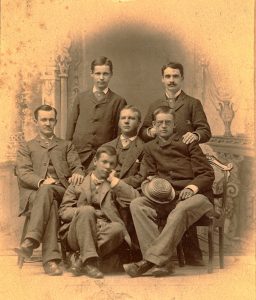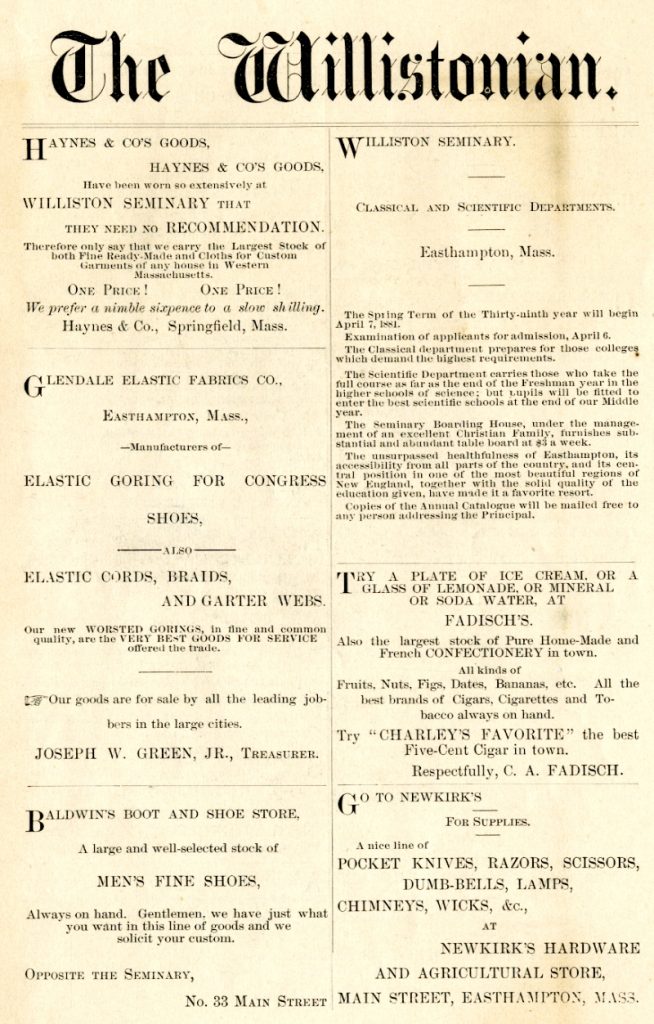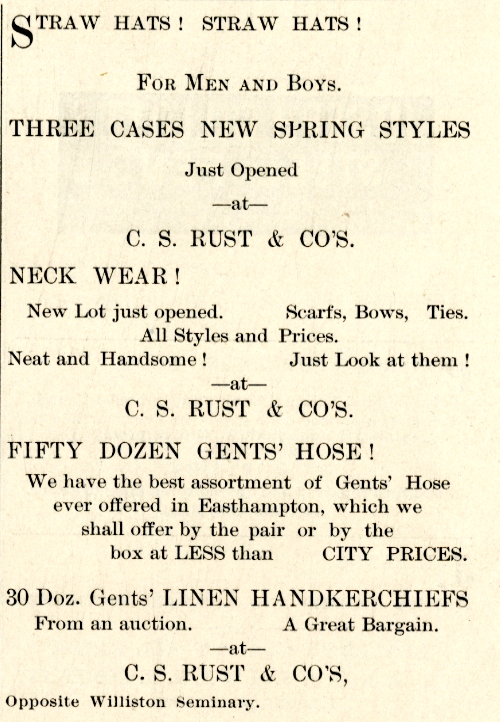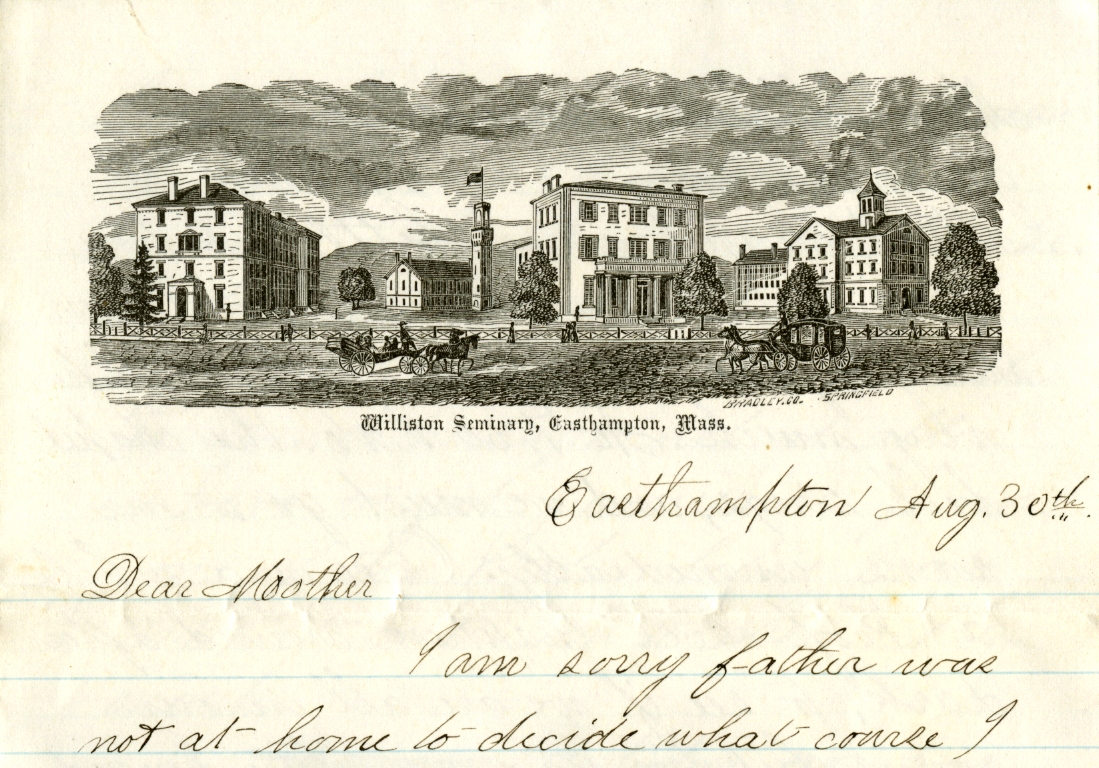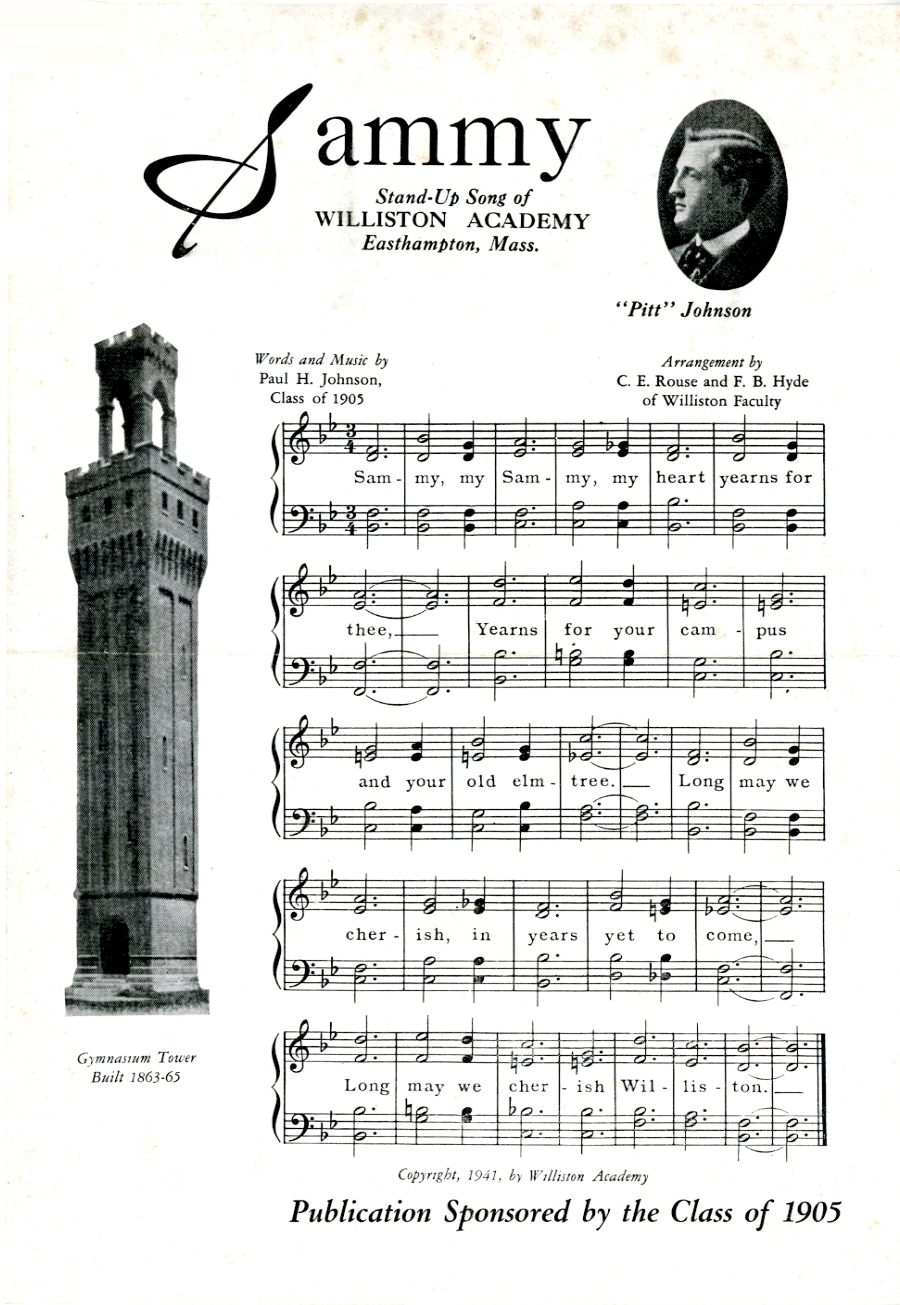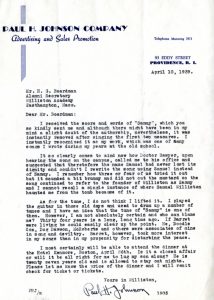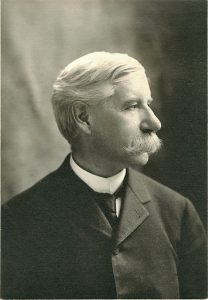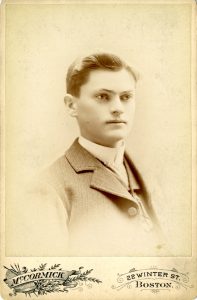
Consider why people keep scrapbooks. Are a they a repository for the ephemera of one’s life, souvenirs of things that seemed important at the time? If so, then they can be unique windows into individuals’ lives, in a particular place, at a particular time.
Among the many student scrapbooks and albums held by the Williston Northampton Archives, that of George Wardman, class of 1889, is among the older and more comprehensive.
George Benjamin Wardman entered Williston in the fall of 1885, as a member of the class of 1888. Born in Cheyenne, WY, April 20, 1869, he was a resident of New Orleans, LA, according to the 1886 Annual Catalogue. How he found his way from the deep South to Easthampton is not known. To further confuse matters, his academic transcript, in contradiction to the Catalogue, claims he resided in Pittsburgh. In any event, he arrived in the fall of 1885, bringing with him a leather scrapbook.
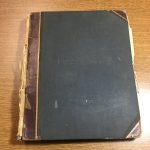 The book, now in fragile condition, measures 12 x 9 inches, bound in buckram-covered boards with a leather spine. Inside the front flyleaf is a penciled inscription: “George Wardman. Christmas 1884. Mama.” George appears to have saved the book for something special; he did not begin adding to it until the winter of 1886. The first pages contain a pasted collage of items from the 1886 Annual Catalogue, including a rosters of the faculty and George’s classmates, his first year curriculum in the Scientific Department, and what must have been the major news of the time, the appointment of a new Principal.
The book, now in fragile condition, measures 12 x 9 inches, bound in buckram-covered boards with a leather spine. Inside the front flyleaf is a penciled inscription: “George Wardman. Christmas 1884. Mama.” George appears to have saved the book for something special; he did not begin adding to it until the winter of 1886. The first pages contain a pasted collage of items from the 1886 Annual Catalogue, including a rosters of the faculty and George’s classmates, his first year curriculum in the Scientific Department, and what must have been the major news of the time, the appointment of a new Principal.
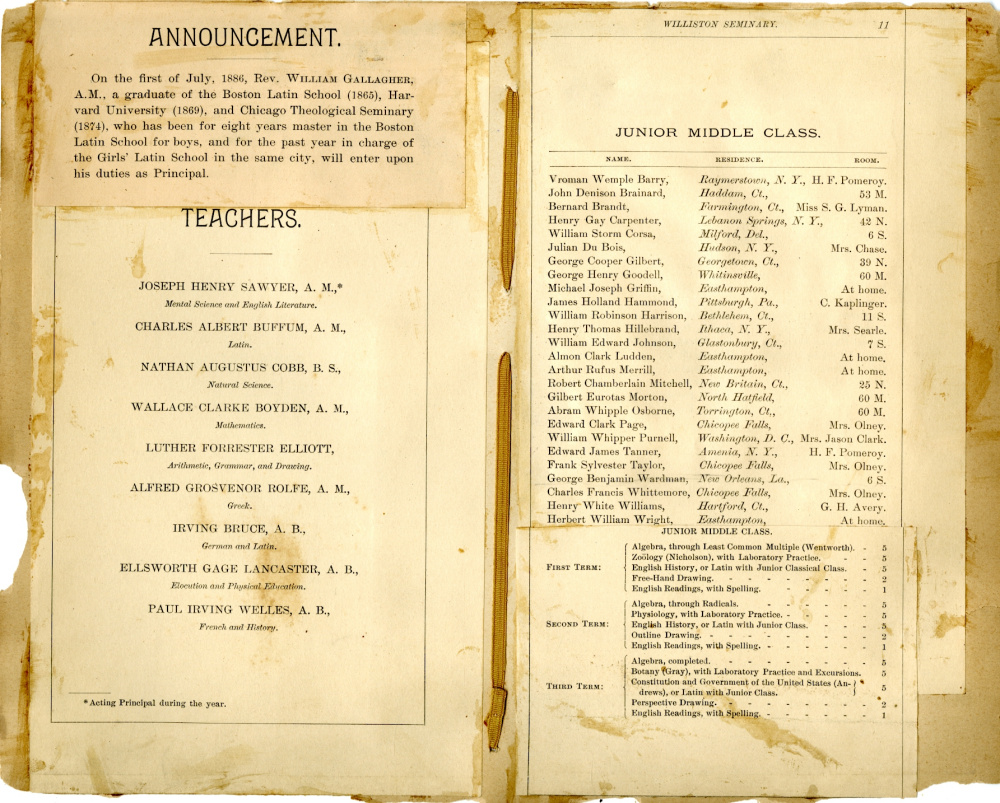
Here are the results of George’s entrance exams, assigning him to the Junior Middle class (“J.M.,” equivalent to the 10th grade) and initialed by Acting Principal Joseph Henry Sawyer. Note how items have been sewn into the scrapbook with gold ribbon. George eventually became less fastidious about this; later items were often simply tucked between pages, without sewing or the use of oxidation-prone glue. Ironically, this has aided in their long-term preservation. 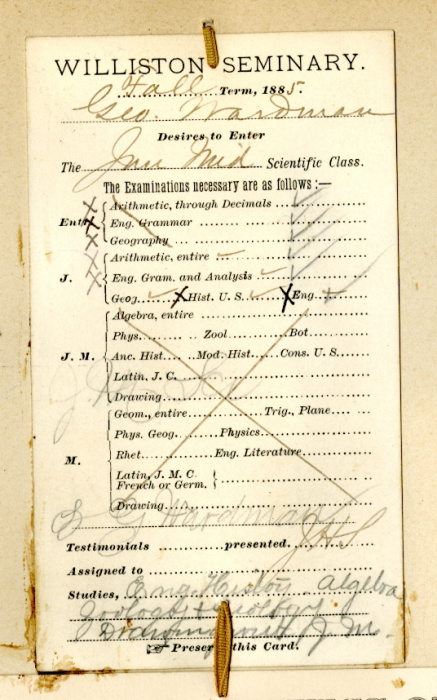 As was customary in most schools and colleges at the time, students’ physical measurements were recorded. George’s vital statistics indicate that he was smaller than average, standing 5’3″ and weighing 102 pounds.
As was customary in most schools and colleges at the time, students’ physical measurements were recorded. George’s vital statistics indicate that he was smaller than average, standing 5’3″ and weighing 102 pounds.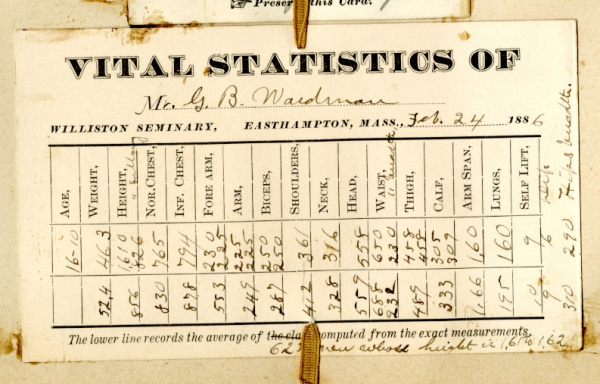
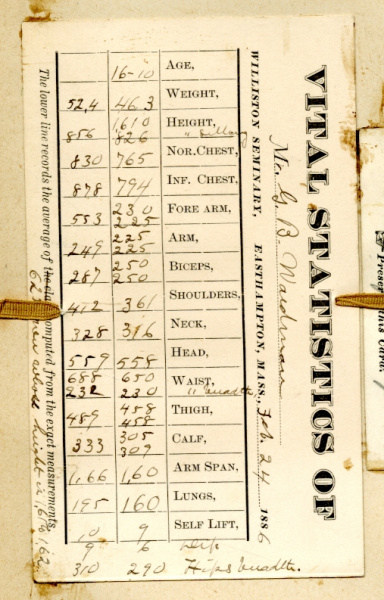 Continue reading
Continue reading


